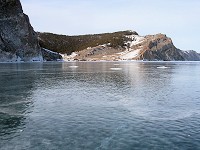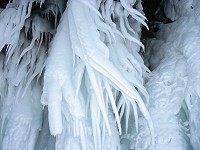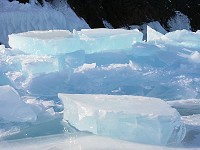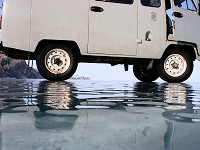| Origin & Development | |
|
Legends & Fairy tales • Earth's Crust Thickness • Underwater Relief • Landscapes • History & Formation • Seismic Activity • | |
| History of Lake Baikal | |
|
History of Explorations • Inhabitants & Settlers • First maps of Baikal • Archaeological Sites • | |
| Lake Baikal Climate | |
|
Introduction • Fogs • Winds & Waves • Ice Conditions • | |
| Fauna & Vegetation | |
|
Mammals • Baikal seal - Nerpa • Ichthyofauna • Invertebrates • Vegetation • | |
| Water of Lake Baikal | |
|
Colour • Transparency • Temperature • Pressure • Depth • Currents • Budget • Chemical Composition • Pollution • | |
| Recreational Areas | |
|
Circumbaikal Railway • Peschanaya Bays • Olkhon Island • Chivirkuysky Gulf • Wooden Irkutsk • Trans-Siberian Railway • | |
| People of Lake Baikal | |
|
People of Siberia • Buryat nation in Baikal • Russians in Baikal • | |
|
| |
Ice Conditions
Width of multiyear constant cracks: 40 cm up to several metres The size of ice fields divided with cracks: 10 - 30 km Ice height in strain cracks: up to 10 - 12 m Duration of drift ice: 10 - 20 days (in the South up to 30 days) Complete release from the ice: In the South: 12 - 16 of May In the North: 9 - 14 of June The earliest and latest terms of freezing: December 14, 1877; February 6, 1959 Average date: January 9 The earliest and latest terms of breakup: April 17, 1923; May 26, 1879 Average date: May 5 Multiyear cycles: breakup: 2 - 8 years freezing: 10 - 15 years intra-century recurrence: freezing: 24 - 45 years breakup: 35 - 60 years Duration of ice crossing by horse: in the South = 95 - 105 days in the North = 110 - 130 days
Click here to see more pictures of lake Baikal in winter. | ||||||



